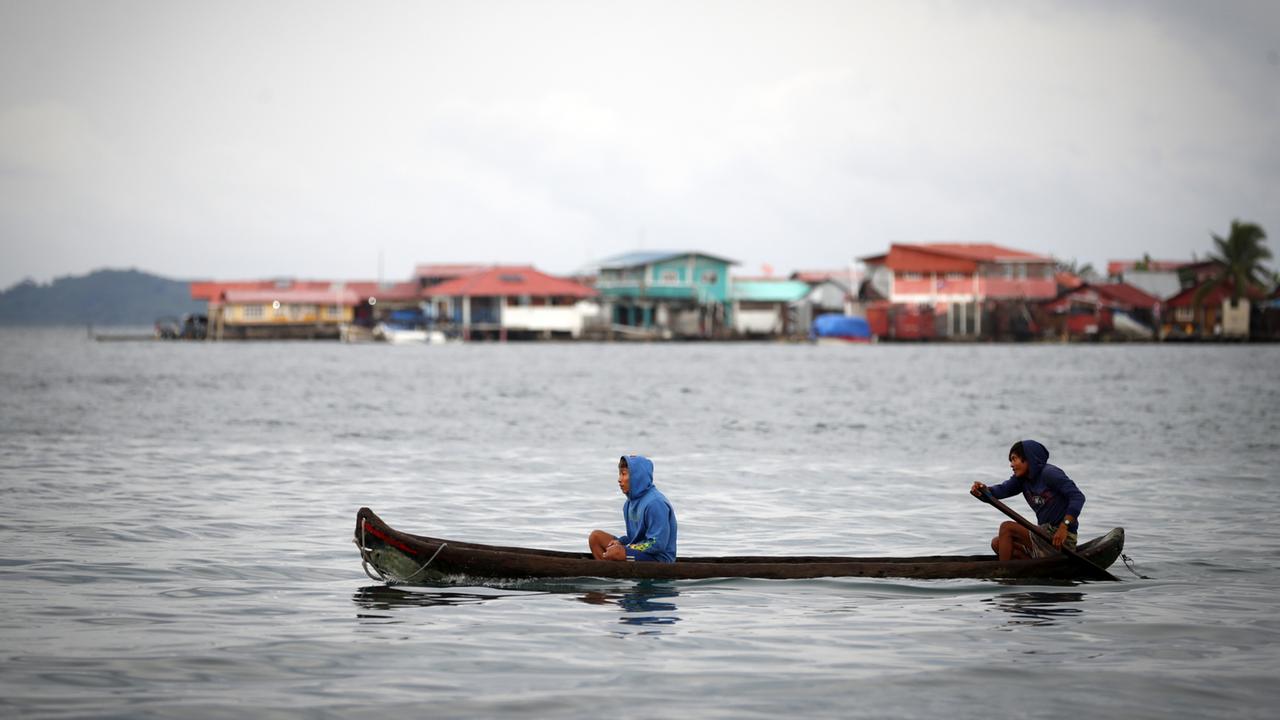Sea levels are rising particularly quickly in the Caribbean. Now the inhabitants of an island in Panama are getting a new home on the mainland. Other islanders will have to follow.
The small island of Gardí Sugdub in Panama is in danger of sinking due to rising sea levels. As a result, almost all of the inhabitants are leaving their homes and moving to a new settlement built for them on Panama's north coast. According to the Guna ethnic group who live on the island, they are the first indigenous people in Panama to leave their island home.
Panama's President: “New chance for life”
President Laurentino Cortizo handed over the Nuevo Cartí settlement to the population. The project was financed by the government and cost 12.2 million dollars. Around 1,350 people will leave the island of Gardí Sugdub in the coming days, Cortizo wrote in an X-post. This is a “new chance at life”.
The newly built settlement of Nuevo Cartí is located on Panama's north coast.
In recent years, the island's population has been very worried about rising sea levels. The ethnic group has therefore decided to move. “Given the risk to the residents, our government agreed to establish a new settlement to secure their future,” wrote Cortizo.
The new home is about a 15-minute boat ride from the island. “I'm excited. The houses are beautiful,” resident Vidalma Yanez told AFP. The houses each consist of two bedrooms, a living and dining room, a kitchen, a bathroom and a laundry room – all with water and electricity connections. Each house is about 41 square meters in size.
Residents in the newly built settlement Nuevo Cartí.
According to experts, the island will sink completely by 2050
The island of Gardí Sugdub, translated as “Crab Island”, is located about two kilometers from the Atlantic coast of Panama. Members of the Guna ethnic group have lived there for almost 200 years. They made a living from fishing, harvesting starchy plants, producing traditional textiles and tourism.
Experts believe that the island will be completely submerged by 2050 due to climate change. It is also threatened by increasingly severe storms and floods, which are causing problems for its residents.
Island was overpopulated
Overpopulation was also a reason for the relocation. While the area is shrinking, the number of people is increasing: the island is only about the size of five football fields, and now too many people live there in huts made of wood, plastic and stones, close together in narrow streets. There is no running water, sewage or waste system on the island, and the electricity supply is unreliable.
The big clean-up: An indigenous couple prepares to move from their home, the island of Gardí Sugdub, to the mainland.
More people will have to relocate
In total, around 80,000 members of the indigenous Guna ethnic group live in Panama, half of whom live on the mainland in the autonomous region of Guna Yala. The other half live on the surrounding islands.
Residents will have to abandon much of the San Blas archipelago by the end of the century, says Steve Paton, chairman of the monitoring program at the Smithsonian Tropical Research Institute in Panama.
According to climate researchers, rising sea levels threaten around a tenth of the world's population, especially people living on coasts and small islands in the Caribbean, the Maldives and the Asia-Pacific region. According to the World Meteorological Organization, sea levels in Latin America and the Caribbean are rising faster than the global average.




